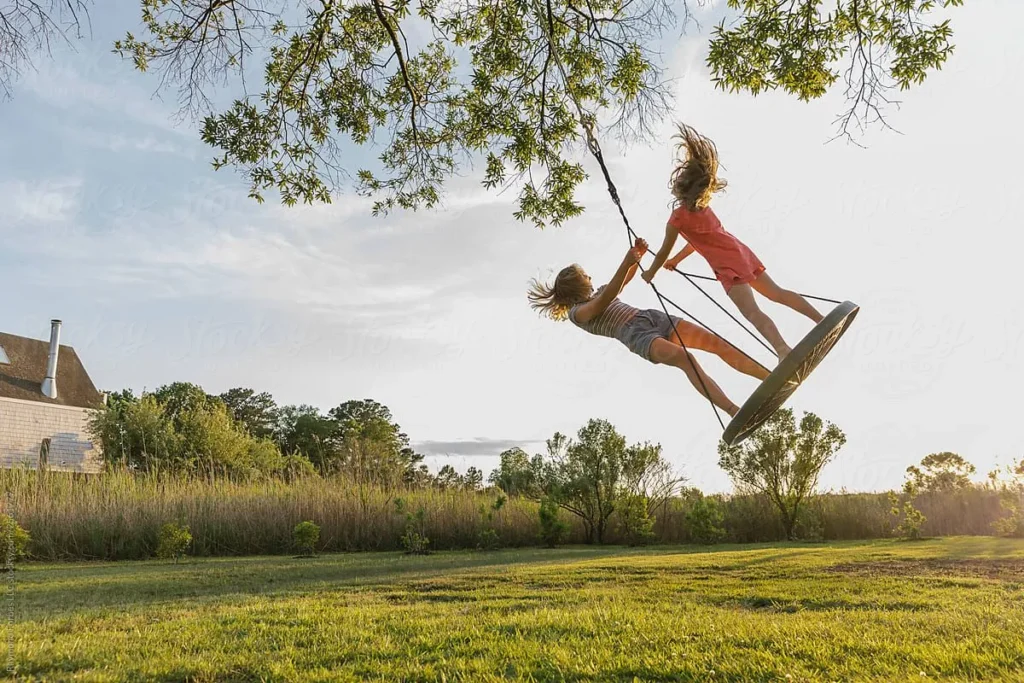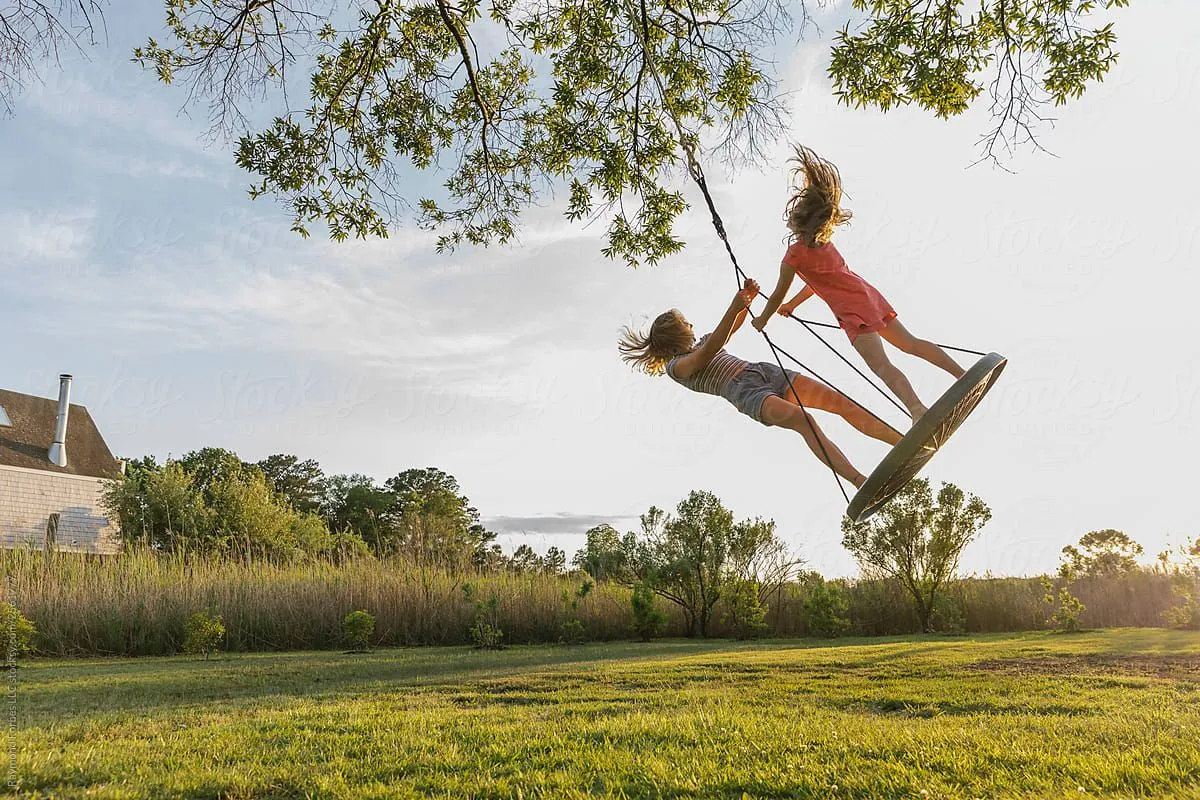Many children intuitively know how to swing on a playground set, but scientists have struggled to understand the detailed mechanics behind it. Now, a new mathematical model developed by researchers from Jumonji University captures how a swinging child adjusts their technique as the swing’s motion increases, shedding light on how playground swings work.
A swing can be thought of as a pendulum, with the rider sitting on the seat that hangs from chains attached to an overhead bar. When the swing is pushed away from its equilibrium position, it moves outward and slightly upwards. Gravity then pulls it back towards its initial position, causing it to overshoot. The rider can propel themselves by shifting their weight at the right moments in the pendulum’s motion, a skill typically developed by the age of 6. They lean back and stretch their legs when the swing reaches its highest point backward, and then tuck their legs and lean forward at the highest point in a forward swing, with the goal of adding angular momentum to the swing and increasing its amplitude.
Previous models assumed constant frequency rocking motions or instantaneous shifts in weight at the highest points of the swing, which do not accurately capture the reality of a child’s smooth and continuous motions. The new model developed by Chiaki Hirata and his colleagues considers the swing as a three-component system comprising a torso, seat, and lower legs, with oscillatory motions that change in frequency to optimize pumping.
Based on this model, the researchers found that the optimal pumping strategy changes as the swing’s amplitude increases. Initially, leaning all the way back just as the swing passes its equilibrium position on its way forward is optimal. However, as the amplitude increases, leaning back earlier, when the swinger is at the highest point in the backswing, becomes more favorable. The researchers tested their model using real humans swinging in a playground-like laboratory and found that it matched well with real-life observations.

The model strikes a balance between simplicity and accuracy, according to Paul Glendinning, an applied mathematician at the University of Manchester. However, some experts, such as Andy Ruina, a mechanical engineer at Cornell University, point out that the model does not address how a child uses information from their environment to adjust the frequency and timing of their motions, known as active feedback. Ruina suggests that for designing robots capable of swinging, applying the principles of active feedback would be a more natural approach.
For Hirata, the research has changed his perspective on watching kids on swings, seeing it as an applied physics laboratory where children interact with the laws of physics. The study provides insights into the mechanics of swinging and how children adapt their technique as the swing’s motion changes, bridging the gap between intuitive play and scientific understanding.









